I'm a veteran laptop reviewer. Here are my top 10 laptops of CES 2025.
It was a treat to see dozens of laptops that debuted at CES a few years ago return to the show floor, further refined thanks to chip architecture and power efficiency advances.
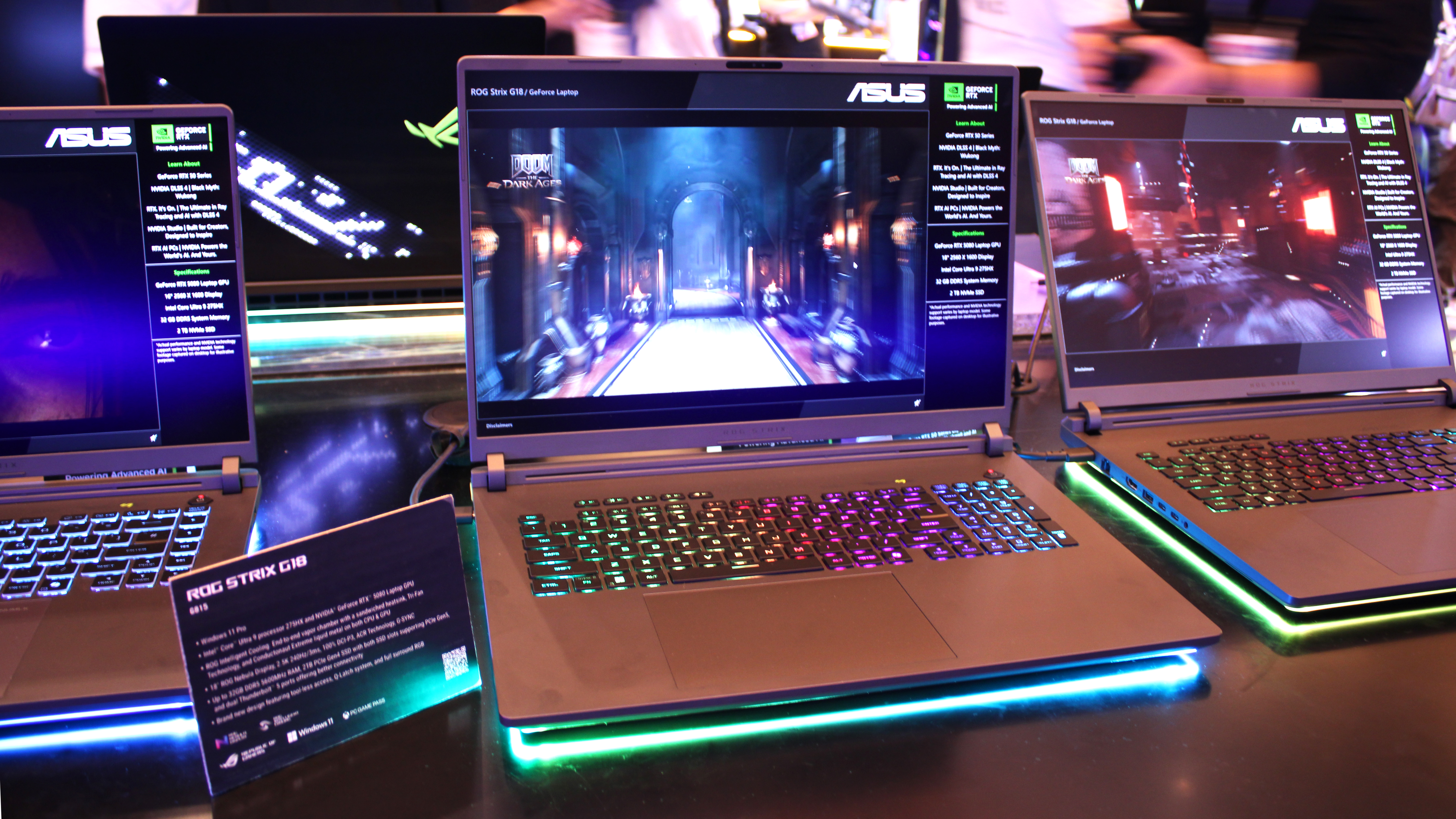
My years as a laptop reviewer have been punctuated by CES. Though the first time I attended, I was focused more on gaming desktops and components, I’ve been laser-focused on laptops since 2020. (What a weird year that was, covering CES remotely with my colleagues.) I’ve gone hands-on with and reviewed a gamut of laptops announced at CES, from tiny 13-inch productivity machines to massive gaming laptops and even dual-screen convertibles.
Every year, a new trend or twist on laptop design is usually carried into the following year. CES 2025 was an amalgamation of all those years I spent holding and typing away on prototypes. (The only thing missing this time was actually being able to see gaming benchmarks.) It was a treat to see dozens upon dozens of laptops that debuted at CES a few years ago return to the show floor, further refined thanks to chip architecture and power efficiency advances.
There was a little of everything on display. If I could make a keyword graphic of the laptops that stood out to me the most, it would say thin, light, budget-friendly, unique, powerful, and AI.
This article is part of a Laptop Mag special issue highlighting news, reviews, interviews, and analysis of the best in consumer tech showcased at CES 2025, direct from Las Vegas, Nevada. For more coverage, check out Laptop Mag's CES 2025 special issue.

10. Thinkpal T100 AI Learning Tablet
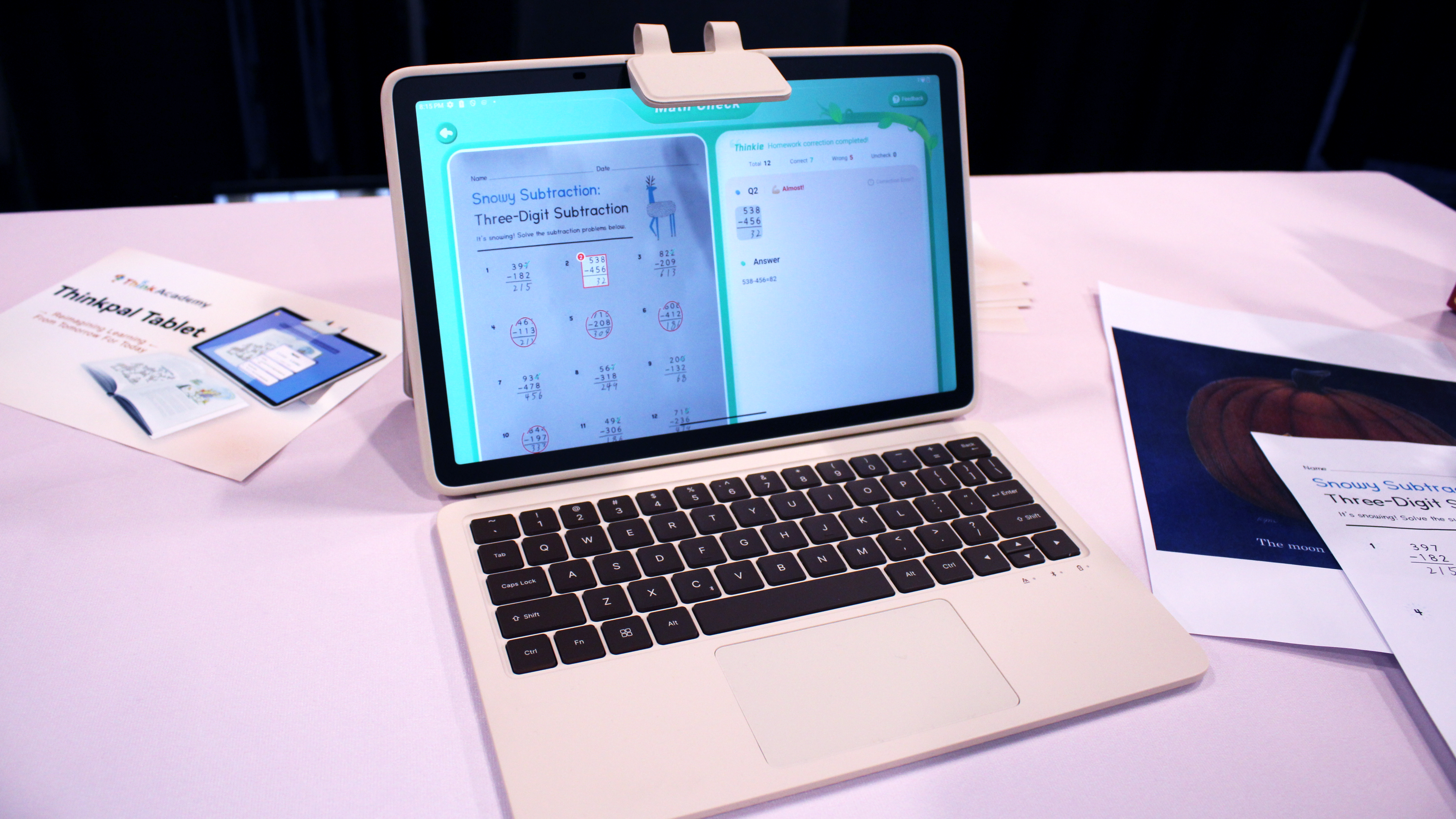
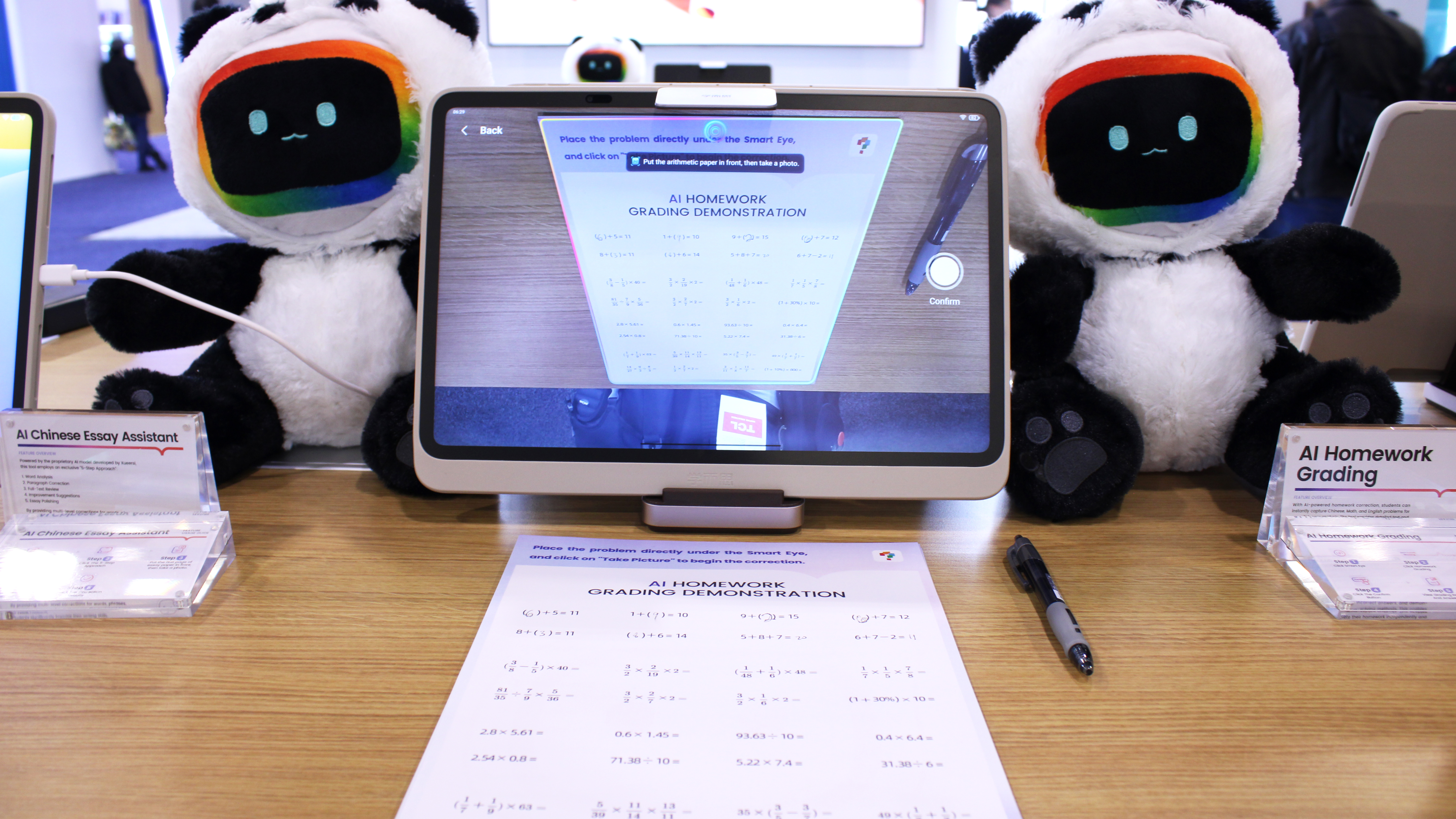
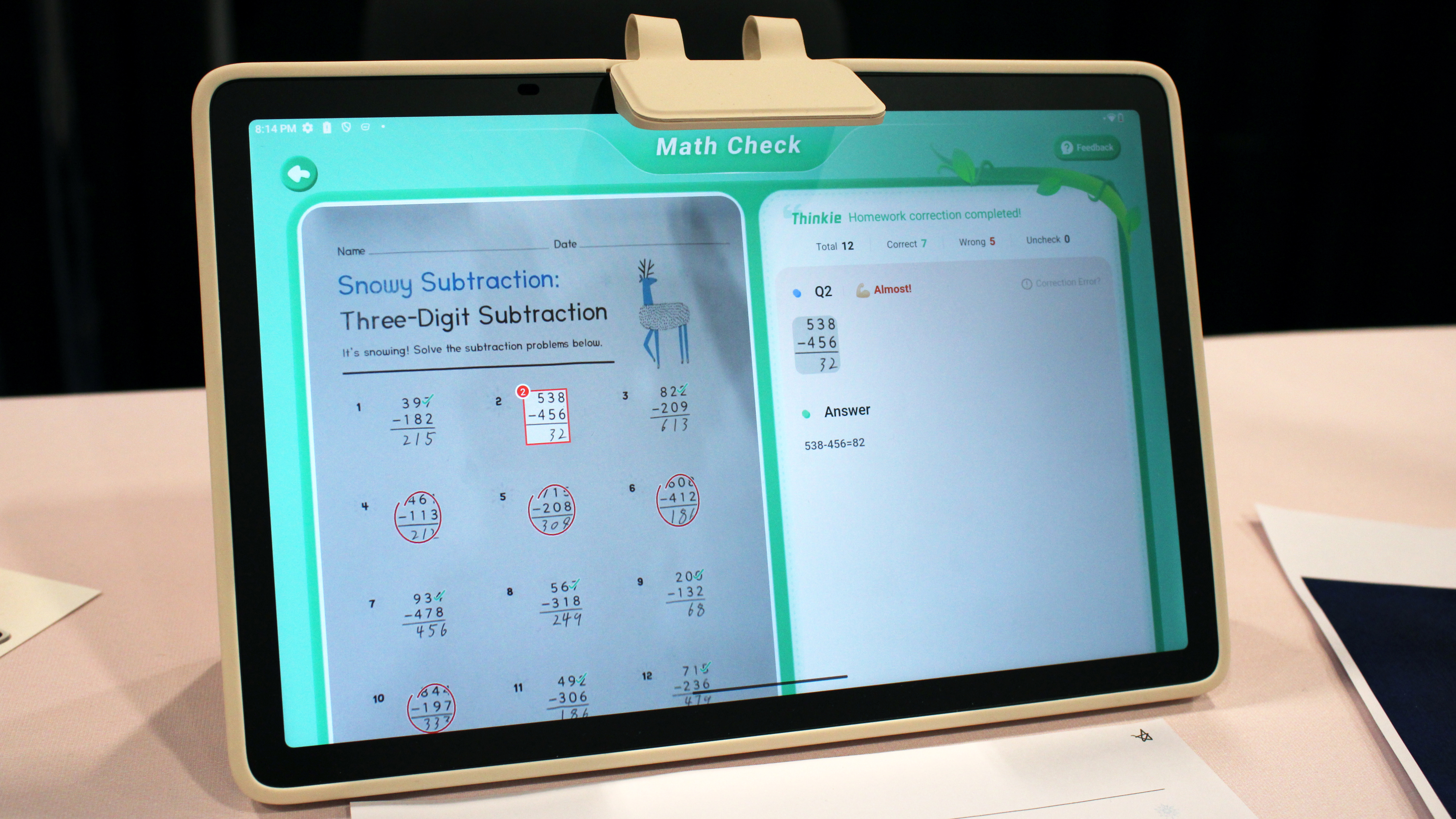
I’m a teacher skeptical of AI’s usefulness in education. But the Thinkpal T100 AI Learning Tablet is the first compelling AI-integrated anything I’ve seen since the bandwagon left town. It’s not designed to — nor can it — replace your kid’s teacher or tutor. Still, it has a surprising amount of merit as a homework study buddy and seems to incorporate many of the same teaching methodologies I learned when I worked as a 1-to-1 tutor and aide.
With AI-integrated software and a camera, it analyzes your kid’s math, writing, or reading homework by taking pictures of it. If they got a math problem wrong, the tablet will explain how to get the correct answer. If they mispronounce a word, the tablet will say the proper pronunciation (similar to Duolingo and other language apps). If they don’t know what a word means, they can call up its dictionary entry by placing their finger on it.
The ThinkPal tablet also connects to popular apps like Google Classroom and YouTube. So if your kid needs to type something in Google Docs or watch a video for homework, they can do that.
You can pre-order the Thinkpal T100 AI Learning Tablet for $249. The tablet, plus the optional detachable keyboard, costs $339.
Get The Snapshot, our free newsletter on the future of computing
Sign up to receive The Snapshot, a free special dispatch from Laptop Mag, in your inbox.
9. LG Gram Pro 16-inch
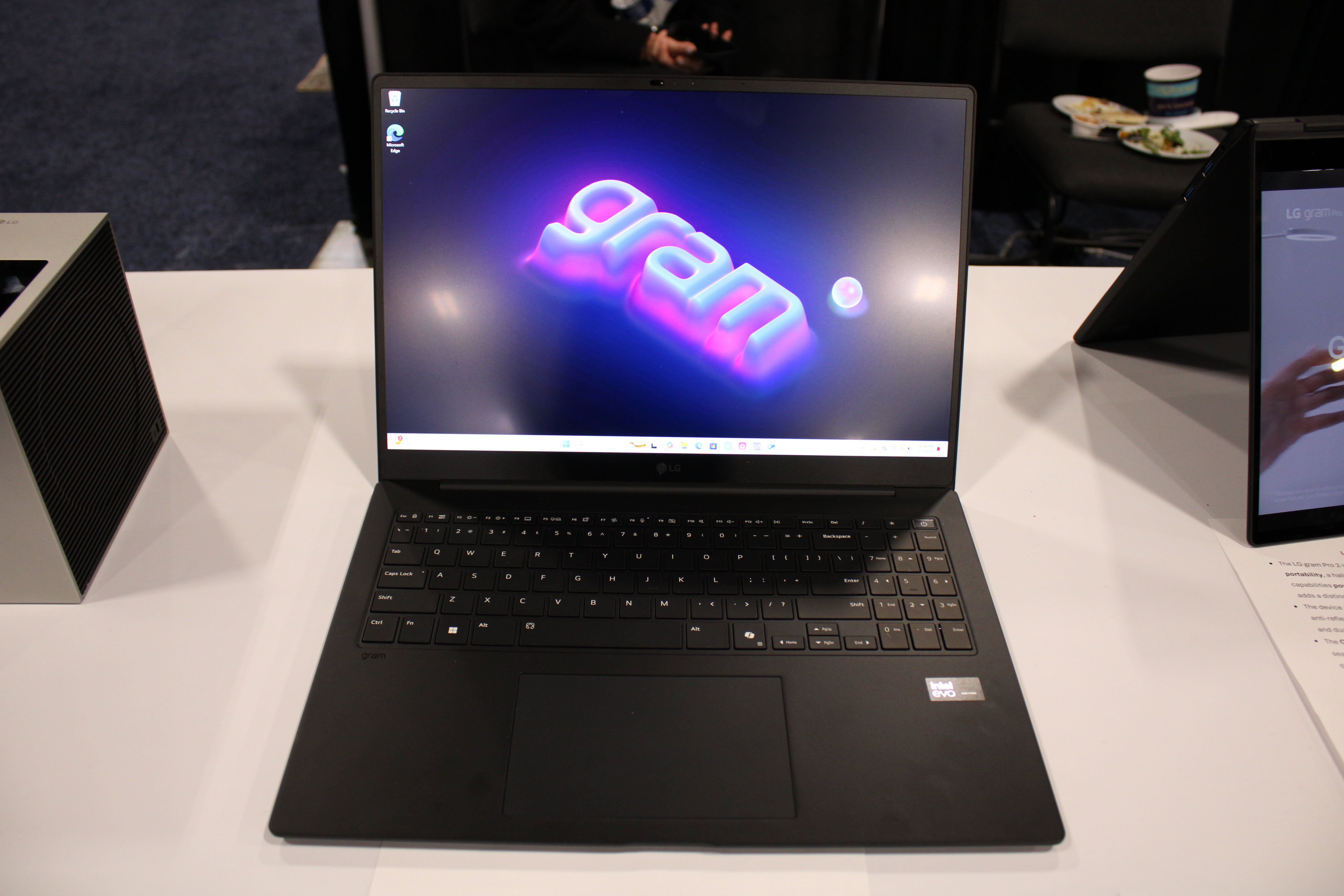
If you blinked, you might have missed this laptop at CES. LG first announced its new Gram Pro 16 last year at IFA Berlin 2024, providing more details at the tail end of 2024. But I found it at a tiny booth at the end of an aisle at CES Unveiled. Not only is the Gram Pro 16 the first Copilot+ PC in LG’s laptop family, but holy cannoli, it's seriously light for a 16-inch laptop.
It weighs 2.73 pounds, is 0.5 inches thick, and has a large 77Wh battery inside. The base model comes configured with an Intel Core Ultra 5 (Lunar Lake), but you can upgrade that to an Ultra 7 or Ultra 9. (All will have integrated Intel Arc graphics.) It will also support up to 32GB of RAM and up to 2TB of SSD storage, but the 144Hz display panel is an LCD, not OLED.
There is no word on pricing or availability yet, but if we’re lucky, we could have this laptop in our testing lab before the end of Q1.
8. Razer Blade 16
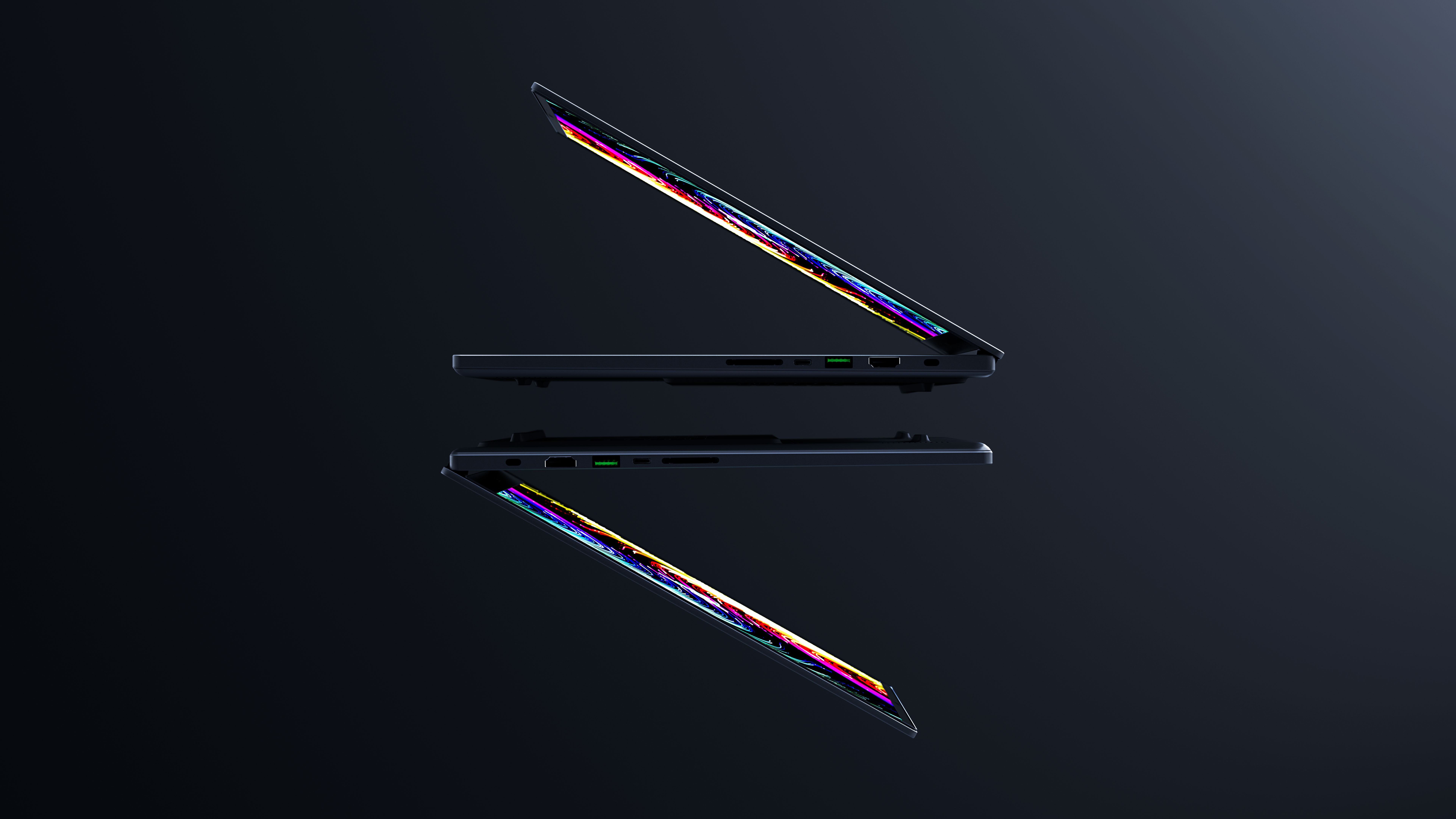
When I think of a blade, I think of something thin and sharp, like a razor. Razer, the company, is known for its sharp-looking gaming laptops, but compared to some of its competitors, it hasn’t been quite as thin. This time, its Blade 16 gaming laptop is 32% thinner and 30% lighter than it’s been in the past. To put that into context, the 2024 Razer Blade 16 is 0.87 inches thick, but the latest model is 0.59 inches.
Just because it’s shed some excess chassis doesn’t mean Razer skimped on the high-end specs, either. It’ll have up to an AMD Ryzen AI 9 HX 370 processor, an Nvidia 50-series GPU, a 1440p 240Hz OLED display, and a 90Wr battery.
That said, there’s no word on the price or release date yet, but if Razer’s pricing history is any indication, it will not be cheap. (Probably in the $3,000 range.)
7. MSI Cyborg A17
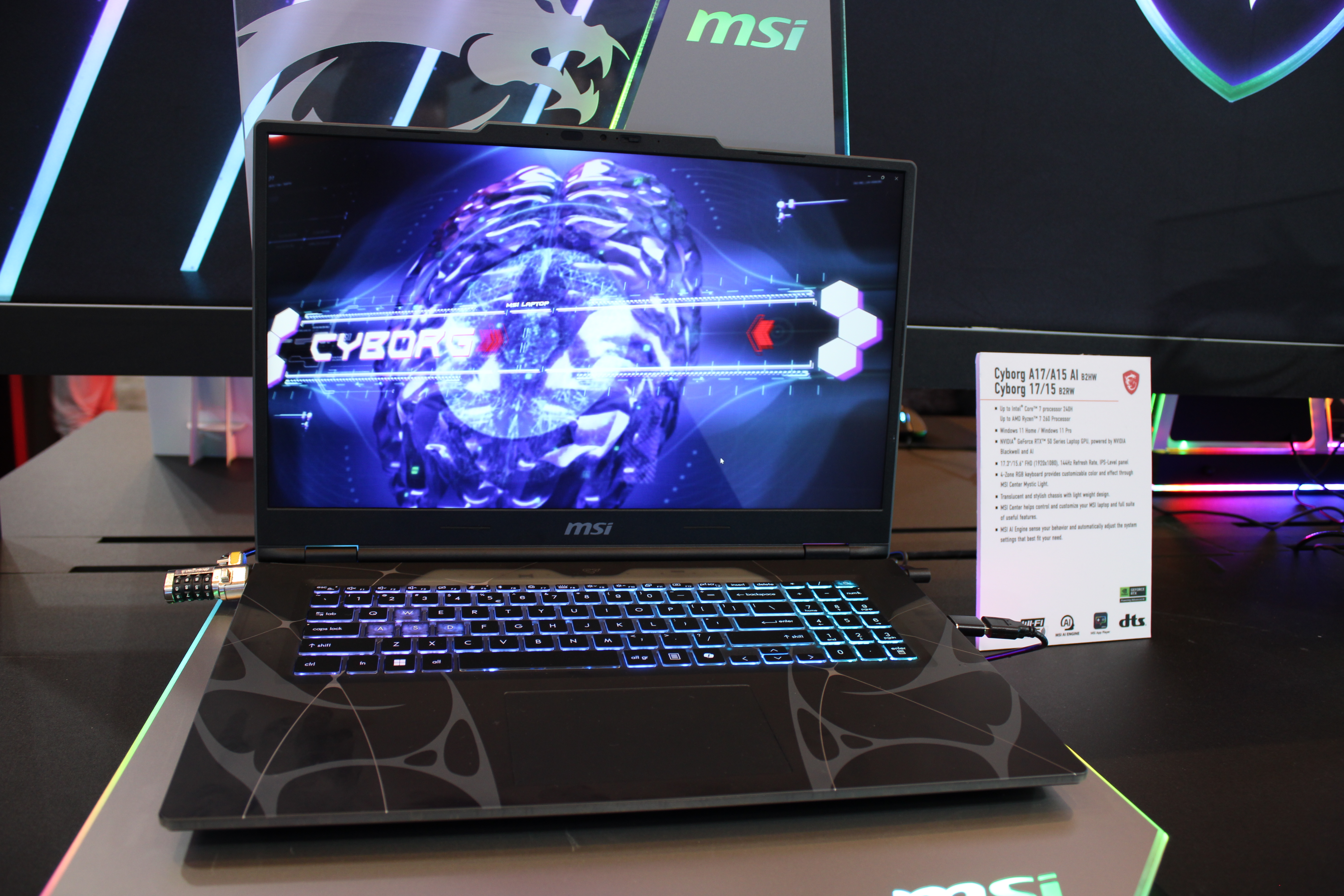
Feeling nostalgic for transparent 90s tech? MSI has a brand new, 17-inch budget gaming laptop, the Cyborg A17, showing no need for a portable gaming machine to look boring and ugly. This time, the transparent sections are on the top of the laptop, around the keyboard, and underneath it, making the aesthetic more obvious. (And, of course, the keys are out with RGB lighting.)
This laptop can be configured with an Intel Core Ultra 240H or AMD Ryzen 7 260 processor, an Nvidia RTX 50-series GPU, and will have a 1080p IPS display with a 144Hz refresh rate. No word on the release date or pricing yet, but given this is a budget gaming laptop, I’d expect the official price to be somewhere in the $900 range.
5. Acer Vero 16
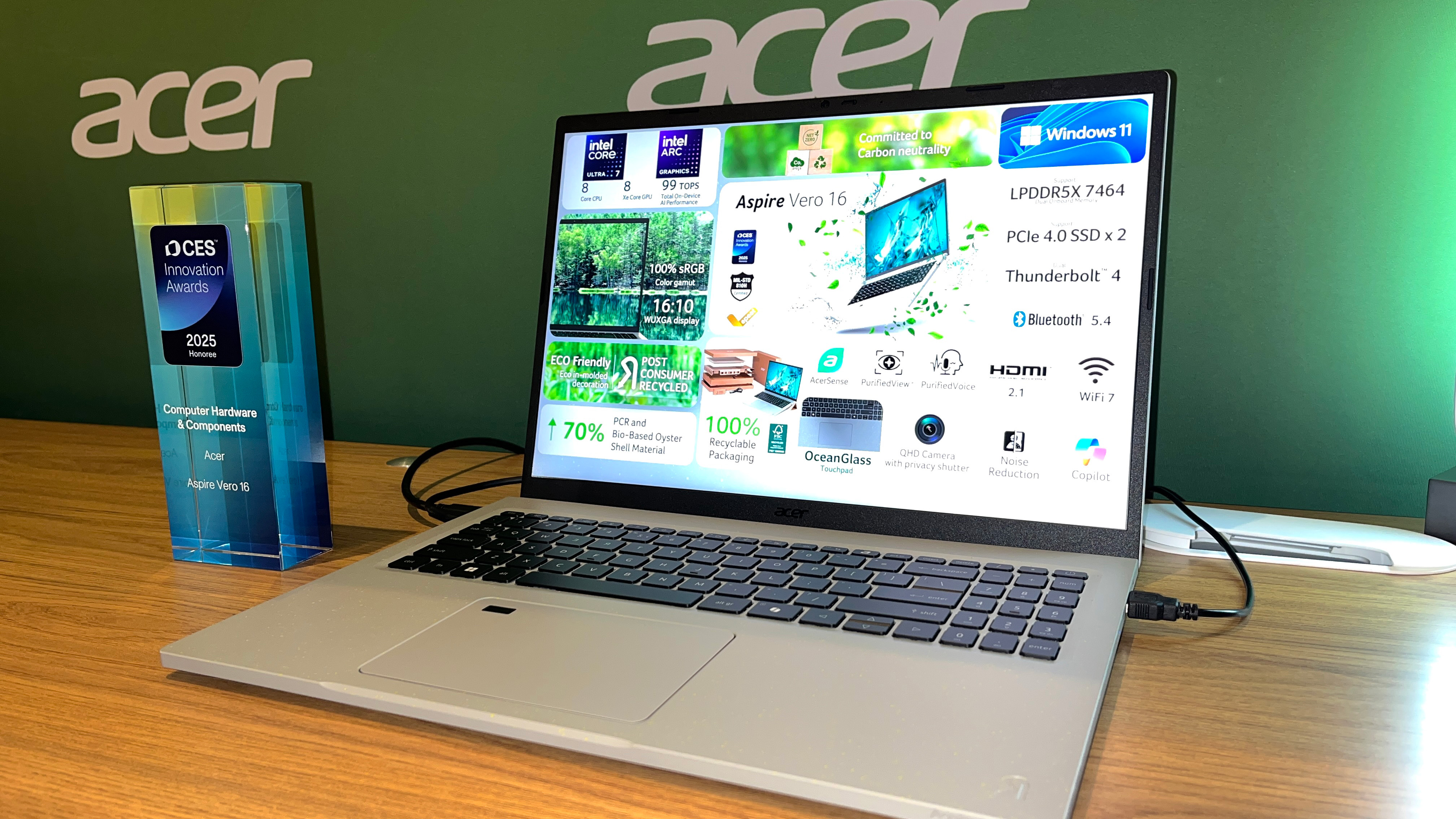
I’ve appreciated the Vero line's use of recycled materials and budget-friendly price tag. Acer’s newest Vero 16 is no different. This time, the company has incorporated oyster shells into its recycled plastic chassis to boost the overall percentage of recycled materials used in the laptop. The result is a speckled surface that’s smoother than previous versions of the Vero.
Specifically, Acer says at least 3% of the bottom palm rest and bottom cover are bio-based oyster shell material, while the entire chassis has at least 69% post-consumer recycled plastic (PCR). The rest of the laptop consists of familiar specs: an Intel Core Ultra 7 processor, 16GB RAM, up to 2TB of SSD storage, and a 1200p IPS display with an optional touchscreen.
The Vero 16 will be available starting in April 2025 for $800.
4. Asus ROG Strix Scar G18

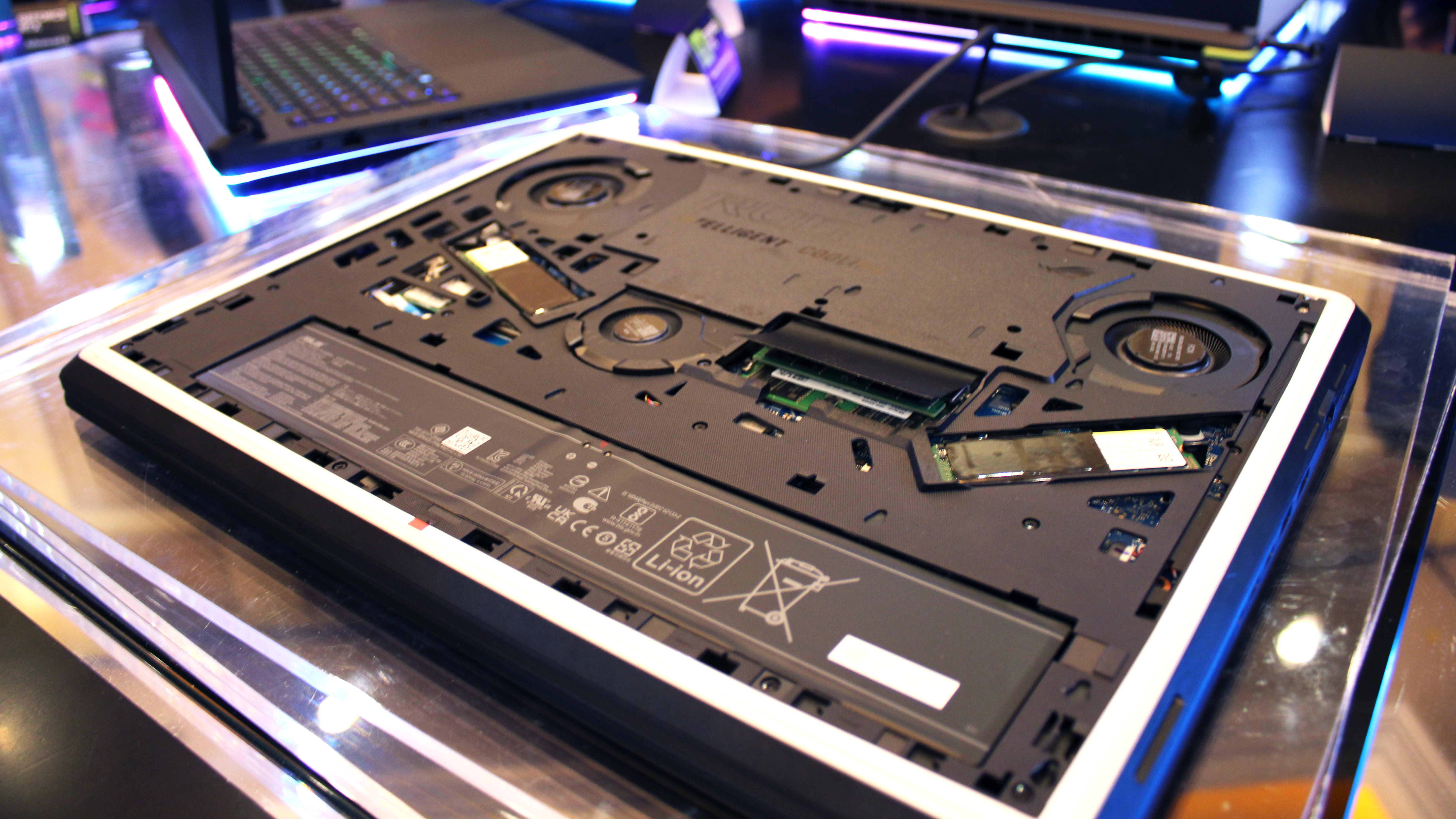
Typically, when I think of a desktop replacement, I think of a massive laptop with the power of a desktop PC that’s harder to upgrade or repair. We still have to crack open our laptops with a screwdriver and hope swapping out components doesn’t need a bottle of ibuprofen. But Asus has brought its newest ROG Strix Scar gaming laptop one step closer to a gaming desktop replacement.
Like a modern gaming PC desktop case, the bottom panel is removed by sliding a manual switch instead of screws. The dual SSDs and RAM are easily accessible, just a fingertip’s depth into the chassis. The SSDs are as easy to remove as they are from an Asus motherboard, as they use the same latched mounting (Q-Latch) system. This new setup also makes it easier to blast dust out of the fans. (Oh yeah — Asus’ new G16 has all the same features.)
The Asus ROG Strix Scar G18 should be available on March 31, 2025, and will cost $3,299 for the fully loaded model.
4. Asus ROG Flow Z13
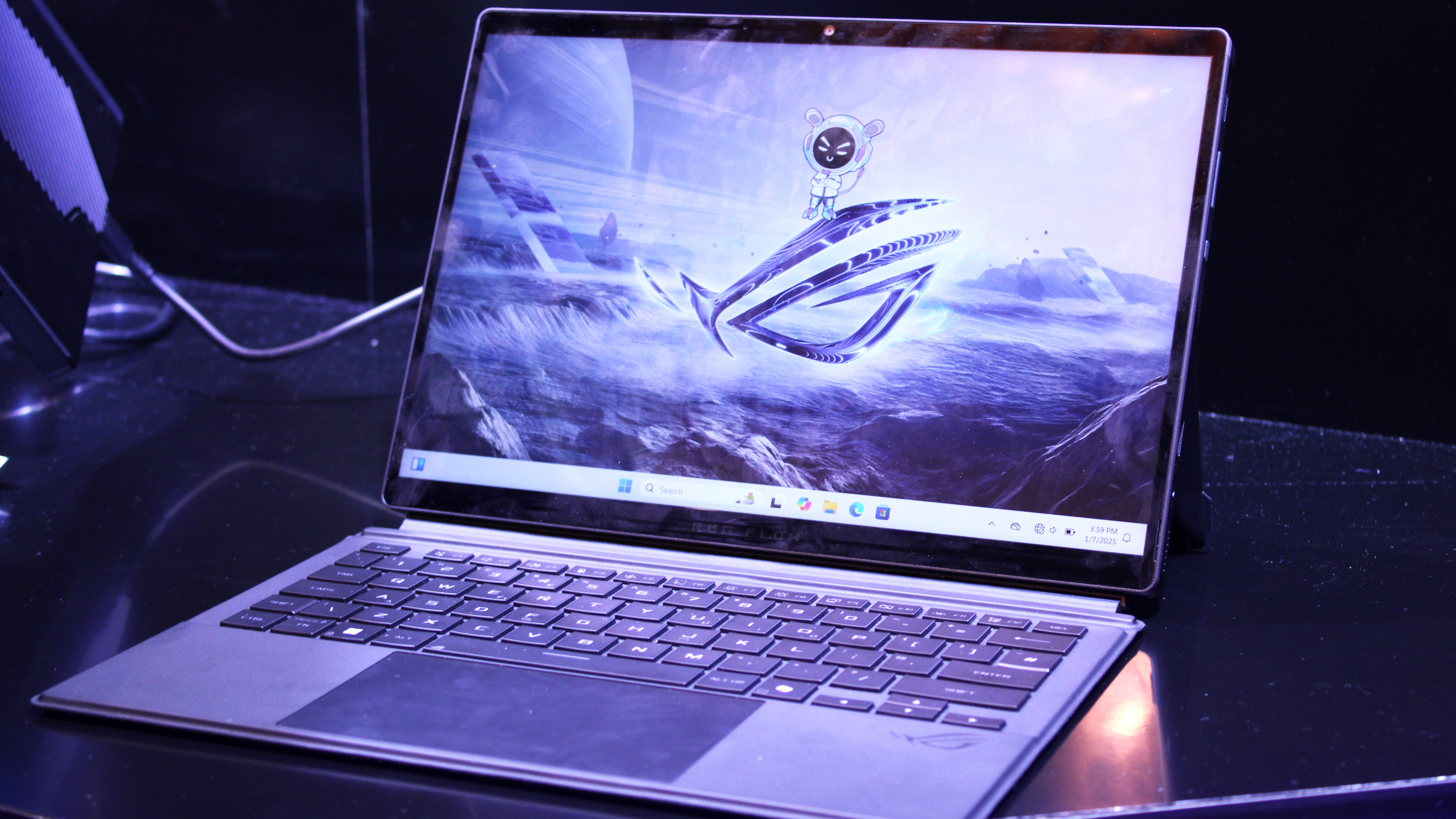
For the first version of this gaming tablet to crank out the highest frame rates possible, you’d need Asus’ optional RTX 3080 eGPU. That bumped the cost from $1,800 to over $3,000, well beyond an equivalent, high-end gaming laptop. Also, the eGPU used a proprietary connector so you couldn’t use it with another laptop. But with those barriers to entry torn down, the ROG Flow Z13 has caught my attention again.
Its base model comes configured with an AMD Ryzen AI Max 390, with a 32-core iGPU built on AMD’s RDNA 3.5 architecture. That architecture powers the surprisingly excellent gaming performance in the Zenbook S 16 — and that laptop has half the total number of iGPU cores by comparison! Alongside AMD’s improved FSR (resolution upscaling) technology, you likely won’t need a discrete graphics card to game on this tablet. (Rumor has it the AMD Strix Halo chips’ graphics performance competes with Nvidia’s RTX 40-series.)
But if you decide you do, Asus will have new eGPUs, up to an RTX 5090, that you can connect it to — via USB-C. Of course, it will probably cost thousands of dollars, but no more property connector means you can use it with another compatible Windows laptop.
The Asus ROG Flow Z13 starts at $2,000 and should be available by the end of March 2025 (Q1). The ROG XG Mobile (eGPU) should be available simultaneously, though Asus has not yet released official pricing.
3. Asus Zenbook A14
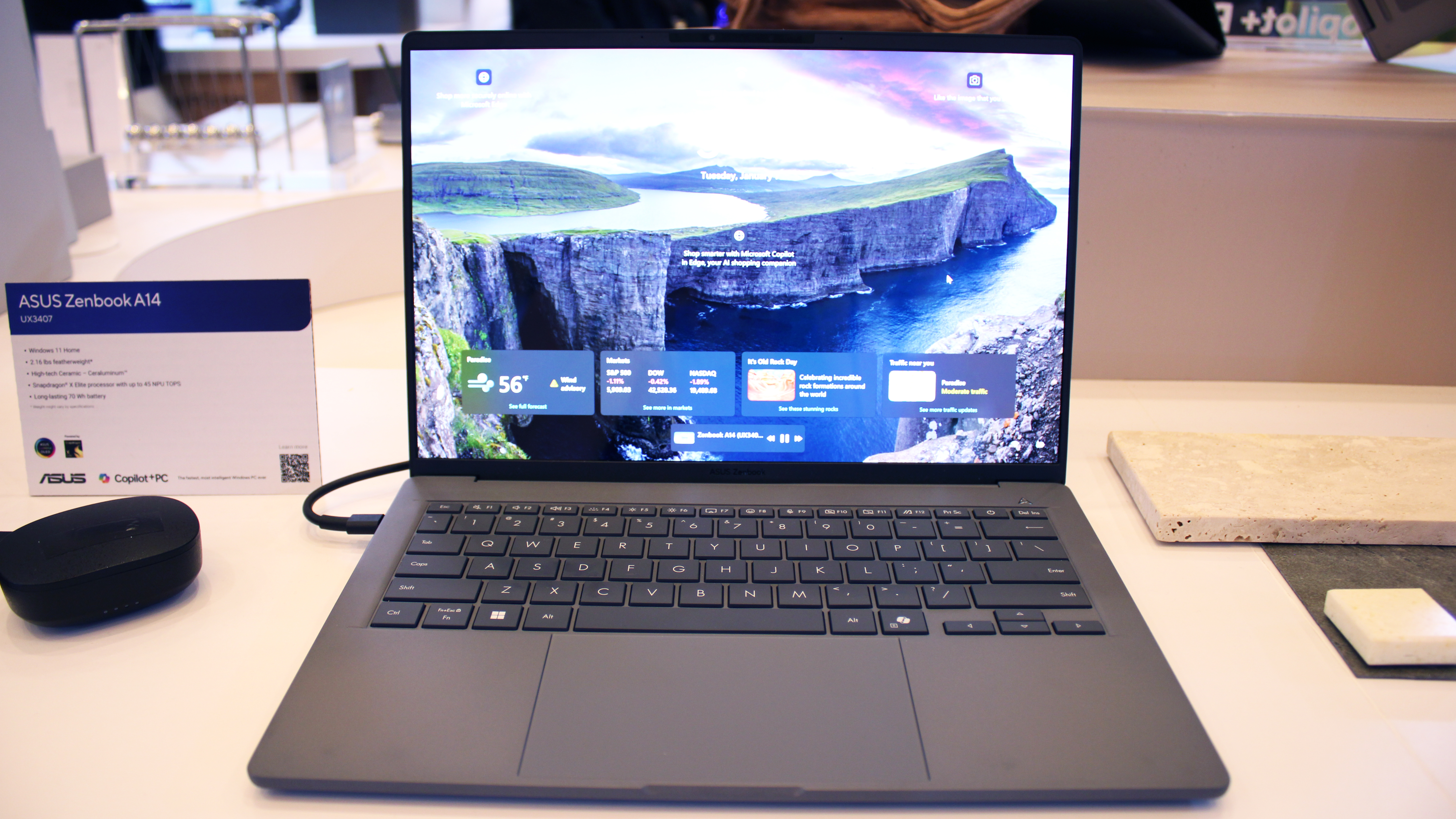
Reviewers, including myself, might have to start rethinking what it means for a laptop to be thin and light. Asus’ new Zenbook A14 is so light it feels like there’s nothing inside it, like a toddler’s “my first laptop” toy. But it’s an adult-aged machine made of fancier materials than plastic.
The 0.52-inch thick, 2.18-pound A14 chassis houses a Qualcomm Snapdragon processor, up to 32GB RAM, up to a 1TB SSD, two USB4 ports (with DisplayPort and power delivery support), one USB-A 3.2 Gen 2, one HDMI 2.1, and an audio jack. That’s on top of a 600-nit OLED display and a 70Wh battery, which Asus says lasts up to 32 hours. (Like, what?!) The laptop’s outer shelf is crafted from Asus’ Ceraluminum material, so it has the same subtle texture as some of the company’s newer Zenbooks.
The $1,100 Zenbook A14 model, configured with a Snapdragon X processor, 32GB RAM, and a 1TB SSD, should be available in mid-January 2025. A $900 model, configured with a slightly faster Snapdragon X Plus processor, 16GB of RAM, and a 512GB SSD, is scheduled to ship in March 2025 and will be sold exclusively at Best Buy.
2. Lenovo Yoga Book 9i


I still love Lenovo’s Yoga Book 9i two years after buying it. But Lenovo’s newest model feels like a whole new dual-screen laptop, and upgrading sooner is more tempting than usual. Compared to its predecessors, the new Yoga Book weighs a little less and is a tad slimmer, yet sports a larger 88Wh battery. Its OLED display is larger, too, 14 inches, with a 120Hz refresh rate and 500 nits of max brightness.
There are many other excellent features I wish came with the previous versions. The virtual keyboard can now be repositioned and resized with finger gestures. The five-finger tap gesture, which expands a window across both screens, now works regardless of how the displays are positioned. The top end of the keyboard folio stand now folds in two different directions, so the laptop can either stand near-vertical (an original feature) or sit near-flush with your desk (a new feature), making it more comfortable to type or draw while retaining full use of both screens instead of just one.
The Yoga Book can be configured with up to 32GB of RAM and 1TB of storage space — but it comes with an Intel Arrow Lake processor (Ultra 255H) instead of Lunar Lake, so it likely will have way more multicore performance by comparison.
It should be available in May 2025 for an expected starting price of $1,999, including the laptop, the keyboard with a folio stand, a mouse, a new stylus, a USB dongle, and a carrying pouch for all of it.
1. HP ZBook 14 Ultra G1a
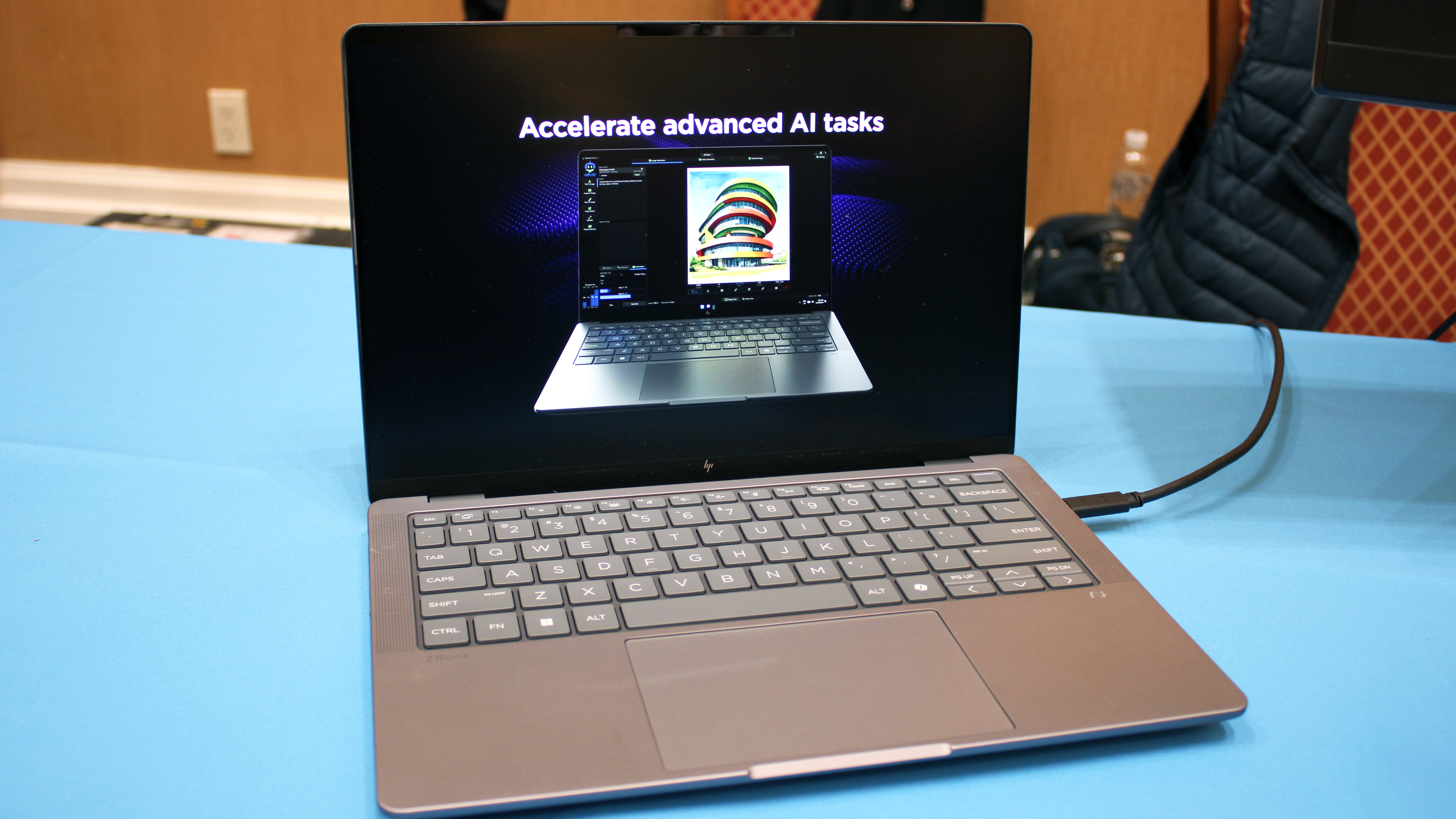
I didn’t believe this 14-inch laptop was a workstation at first. How could something so small and so light have the desktop-like performance needed for heavy workloads? Turns out this ultra-portable powerhouse is an incredible feat of engineering.
At the heart of HP’s 3.3-pound ZBook 14 Ultra G1a is AMD’s Ryzen AI Max+ Pro 395 processor with 128GB of unified memory (RAM that is built into the CPU itself). Like the Ryzen AI 300 series chips, you can allocate a large portion of RAM to the integrated graphics to speed up tasks like 3D image rendering or real-time auto transcription.
Combined with its 40-core iGPU, this monster chip could push this ZBook into Apple MacBook Pro M4 Max performance territory or even compete with other workstations configured with Nvidia’s GeForce RTX 4060 — if the ZBook is loaded with top-tier parts, of course.
This laptop also features a 2.8K (2880 x 1800) 120Hz OLED touchscreen, up to 4TB of SSD storage, and a bevy of ports. HP hasn’t released pricing details yet but says the ZBook 14 Ultra G1a should be available by March 31, 2025.

Joanna Nelius is a contributing writer to Laptop Mag. She has reported on and reviewed laptops for The Verge, Gizmodo, PC Gamer, and USA Today.

